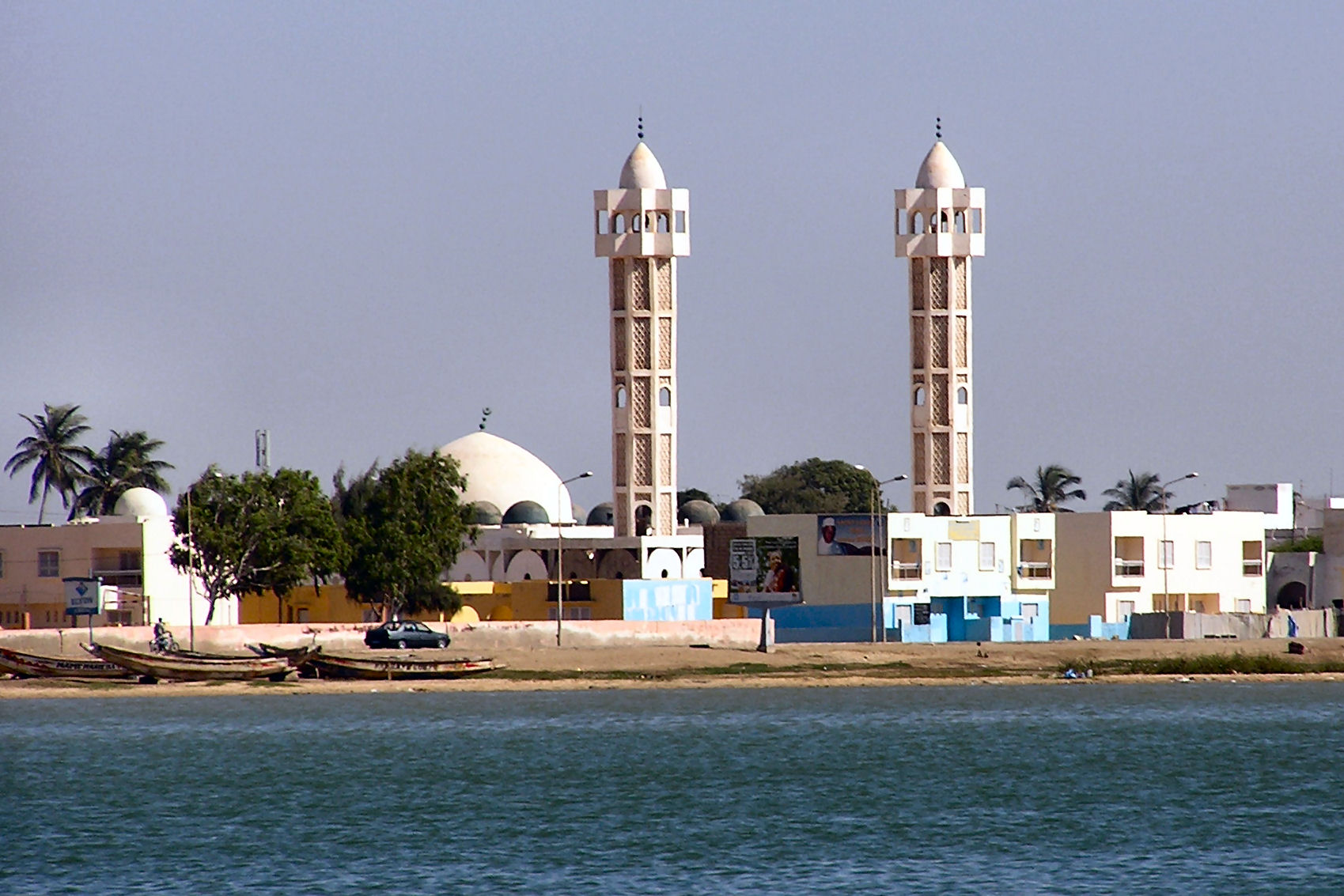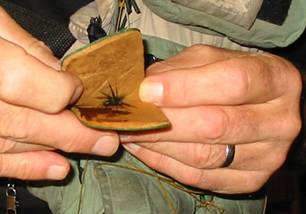|
Hammallism
Hamallayya or Hamallism is a Sufi ṭarīqah (order, path) originating in West Africa as an outgrowth from and reaction against the Tijaniyyah brotherhood. It was founded at the beginning of the 20th century by a mystic Muhammad ben Amadu (d. 1909) of Maure and Fulani background, as reform movement of Tijaniyyah practice. Stressing opposition to hierarchy and downplaying the importance of education, the movement spread in the 1920s by Amadu's disciple Shaykh Hamahullah bin Muhammad bin Umar (1886–1943) in what was then French Soudan, modern Mali. It first took root amongst Wolof traders living in Nioro, but soon spread to servile caste Muslims in Mauretania and Mali. Doctrine Hammallist doctrinal changes from Tijaniyyah ritual included the removal of some recited references to the Prophet, rejecting Qur'anic study, and the shouting of prayers in group worship. Hammallists tended to stress traditional West African ritual and the rejection of traditional hierarchies, includ ... [...More Info...] [...Related Items...] OR: [Wikipedia] [Google] [Baidu] |
Islam In Niger
Islam in Niger accounts for the vast majority of the nation's religious adherents. The faith is practiced by more than 99.3% of the population, although this figure varies by source and percentage of the population who are classified as Animist. The vast majority of Muslims in Niger are Malikite Sunni with Salafi influences. Many of the communities who continue to practice elements of traditional religions do so within a framework of syncretic Islamic belief, making agreed statistics difficult. Islam in Niger, although dating back more than a millennium, gained dominance over traditional religions only in the 19th and early 20th centuries, and has been marked by influences from neighboring societies. Sufi brotherhoods have become the dominant Muslim organization, like much of West Africa. Despite this, a variety of interpretations of Islam coexist—largely in peace—with one another as well as with minorities of other faiths. The government of Niger is secular in law while recog ... [...More Info...] [...Related Items...] OR: [Wikipedia] [Google] [Baidu] |
Niger
) , official_languages = , languages_type = National languagesRépublique du Niger, "Loi n° 2001-037 du 31 décembre 2001 fixant les modalités de promotion et de développement des langues nationales." L'aménagement linguistique dans le monde (accessed 21 September 2016) , languages = , religion_ref = , religion_year = 2012 , religion = , demonym = Nigerien , capital = , coordinates ... [...More Info...] [...Related Items...] OR: [Wikipedia] [Google] [Baidu] |
Tierno Bokar
Tierno Bokar ( ff, Cerno Bokar), full name Tierno Bokar Saalif Tall (1875 – 1939), was a Malian mystic, Sufi sage, and a Muslim spiritual teacher of the early twentieth century famous for his message of religious tolerance and universal love. Life TiernoAn honorific title meaning "master" ( ff, cerno). Bokar was born in Segou, Mali, in 1875. Bokar was the son of Salif (a Tukolor prince) and Aissata. His grandfather, Seydou Hann, was respected as a great Sufi mystic. As a child, Bokar was educated in the Tijani Order. By the age of 15, Tierno had memorized most of the Koran, Islamic rituals and laws, and the lives of many saints. In 1890, Bokar's father left his family in Segou in order to continue to fight against the French as Segou fell into French hands without resistance. Bokar moved with his mother to the village of Bandiagara in 1893. At the age of 18, he studied under Amadou Tafsir Ba, who introduced him to the secrets of the thought of the Tijani founder, Shaykh ... [...More Info...] [...Related Items...] OR: [Wikipedia] [Google] [Baidu] |
Islam In Burkina Faso
Islam in Burkina Faso ( Upper Volta) has a long and varied history. According to the 2010 census, the population of the country is 63.2% Muslim. Although the vast majority of Muslims are Sunni Muslims who follow Maliki school of thought, Shia Islam and Ahmadiyya movement also have some following. A 2009 Pew Forum report estimates that less than 1% of Muslims in Burkina Faso are Shia. The Ahlu Bayt Portal cites several studies ranging from under 1% of the Muslim population, to a 2000 cite from the ''Imam Husayn Encyclopedia'' which claims that 9.38% of Burkinese Muslims are Shi'a. . ahlulbaytportal.com. 2010 Jan 11. History Until the end of the 19th century, the Upper Volta was dominated by the |
Islam In Mali
Islam is very important to traditional Malian culture. Muslims currently make up approximately 95 percent of the population of Mali. The majority of Muslims in Mali are Malikite Sunni, influenced with Sufism. Ahmadiyya and Shia branches are also present. History During the 9th century, Muslim Berber and Tuareg merchants brought Islam southward into West Africa. Islam also spread in the region by the founders of Sufi brotherhoods (tariqah). Conversion to Islam linked the West African savannah through belief in one God and similar new forms of political, social and artistic accoutrements. Cities including Timbuktu, Gao and Kano soon became international centers of Islamic learning. The most significant of the Mali kings was Mansa Musa (1312–1337), who expanded Mali influence over the large Niger city-states of Timbuktu, Gao, and Djenné. Mansa Musa was a devout Muslim who was reported to have built various major mosques throughout the Mali sphere of influence; his gold-laden p ... [...More Info...] [...Related Items...] OR: [Wikipedia] [Google] [Baidu] |
Islam In Senegal
Islam is the predominant religion in Senegal. 97 percent of the country's population is estimated to be Muslim. Islam has had a presence in Senegal since the 11th century. Sufi brotherhoods expanded with French colonization, as people turned to religious authority rather than the colonial administration. The main Sufi orders are the Tijaniyyah, the Muridiyyah or Mourides, and to a lesser extent, the pan-Islamic Qadiriyyah and the smaller Layene order. Approximately 1% are Shiites and <1% are Muslims. History Introduction of Islam  For nearly a millennium, there has been an Islamic presence in Senegal. Islam's in ...
For nearly a millennium, there has been an Islamic presence in Senegal. Islam's in ...
[...More Info...] [...Related Items...] OR: [Wikipedia] [Google] [Baidu] |
Sufi Orders
A tariqa (or ''tariqah''; ar, طريقة ') is a school or order of Sufism, or specifically a concept for the mystical teaching and spiritual practices of such an order with the aim of seeking ''haqiqa'', which translates as "ultimate truth". A tariqa has a ''murshid'' (guide) who plays the role of leader or spiritual director. The members or followers of a tariqa are known as ''muridin'' (singular ''murid''), meaning "desirous", viz. "desiring the knowledge of God and loving God" (also called a ''fakir''). Tariqa is also believed to be the same as Tzadik of Judaism meaning the "rightly guided one". The metaphor of "way, path" is to be understood in connection of the term ''sharia'' which also has the meaning of "path", more specifically "well-trodden path; path to the waterhole". The "path" metaphor of ''tariqa'' is that of a further path, taken by the mystic, which continues from the "well-trodden path" or exoteric of ''sharia'' towards the esoteric ''haqiqa''. A fourth "sta ... [...More Info...] [...Related Items...] OR: [Wikipedia] [Google] [Baidu] |
Bellah (caste)
The Ikelan (Éklan/Ikelan or Ibenheren in Tamasheq; Bouzou in Hausa; Bella in Songhai; singular Akli) are a caste within Tuareg society, who were at one time slaves or servile communities. The Ikelan's situation is somewhat analogous to that of the Haratin within Maure society in Mauritania. Like the Haratin, the name "Ikelan", and to a much greater degree ''Bouzou'' and ''Bella'', are exonyms (a name not used by that people themselves) with negative connotations. Historically the term "Ikelan" has been used to refer to the slaves of the Tuareg. Caste system The Tuareg people have in the past had a highly socially stratified society, with specific social roles (warriors, religious leaders) or professions (blacksmiths, farmers, merchants) assigned to specific castes. The tiny aristocratic caste of warrior elite which once sat atop a pyramid of Tuareg society was decimated during the wars of the colonial period, and this, along with economic necessity, post-colonial border restr ... [...More Info...] [...Related Items...] OR: [Wikipedia] [Google] [Baidu] |
Tuareg People
The Tuareg people (; also spelled Twareg or Touareg; endonym: ''Imuhaɣ/Imušaɣ/Imašeɣăn/Imajeɣăn'') are a large Berber ethnic group that principally inhabit the Sahara in a vast area stretching from far southwestern Libya to southern Algeria, Niger, Mali, and Burkina Faso. Traditionally nomadic pastoralists, small groups of Tuareg are also found in northern Nigeria. The Tuareg speak languages of the same name (also known as ''Tamasheq''), which belong to the Berber branch of the Afroasiatic family. The Tuaregs have been called the "blue people" for the indigo dye coloured clothes they traditionally wear and which stains their skin. They are a semi-nomadic people who practice Islam, and are descended from the indigenous Berber communities of Northern Africa, which have been described as a mosaic of local Northern African (Taforalt), Middle Eastern, European (Early European Farmers), and Sub-Saharan African-related ancestries, prior to the Arab expansion. Tuareg peopl ... [...More Info...] [...Related Items...] OR: [Wikipedia] [Google] [Baidu] |
Fulbe
The Fula, Fulani, or Fulɓe people ( ff, Fulɓe, ; french: Peul, links=no; ha, Fulani or Hilani; pt, Fula, links=no; wo, Pël; bm, Fulaw) are one of the largest ethnic groups in the Sahel and West Africa, widely dispersed across the region. Inhabiting many countries, they live mainly in West Africa and northern parts of Central Africa, South Sudan, Darfur, and regions near the Red Sea coast in Sudan. The approximate number of Fula people is unknown due to clashing definitions regarding Fula ethnicity. Various estimates put the figure between 25 and 40 million people worldwide. A significant proportion of the Fula – a third, or an estimated 12 to 13 million – are pastoralists, and their ethnic group has the largest nomadic pastoral community in the world., Quote: The Fulani form the largest pastoral nomadic group in the world. The Bororo'en are noted for the size of their cattle herds. In addition to fully nomadic groups, however, there are also semisedentary Fulani —Fu ... [...More Info...] [...Related Items...] OR: [Wikipedia] [Google] [Baidu] |
Amadou Hampate Ba
Amadou is a spongy material derived from ''Fomes fomentarius'' and similar fungi that grow on the bark of coniferous and angiosperm trees, and have the appearance of a horse's hoof (thus the name "hoof fungus"). It is also known as the "tinder fungus" and is useful for starting slow-burning fires. The fungus must be removed from the tree, the hard outer layer scraped off, and then thin strips of the inner spongy layer cut for use as tinder. Amadou was a precious resource to ancient people, allowing them to start a fire by catching sparks from flint struck against iron pyrites. Bits of fungus preserved in peat have been discovered at the Mesolithic site of Star Carr in the UK, modified presumably for this purpose. Remarkable evidence for its utility is provided by the discovery of the 5,000-year-old remains of "Ötzi the Iceman", who carried it on a cross-alpine excursion before his death and subsequent ice-entombment. Amadou has great water-absorbing abilities. It is used in fly f ... [...More Info...] [...Related Items...] OR: [Wikipedia] [Google] [Baidu] |
_(cropped).jpg)





